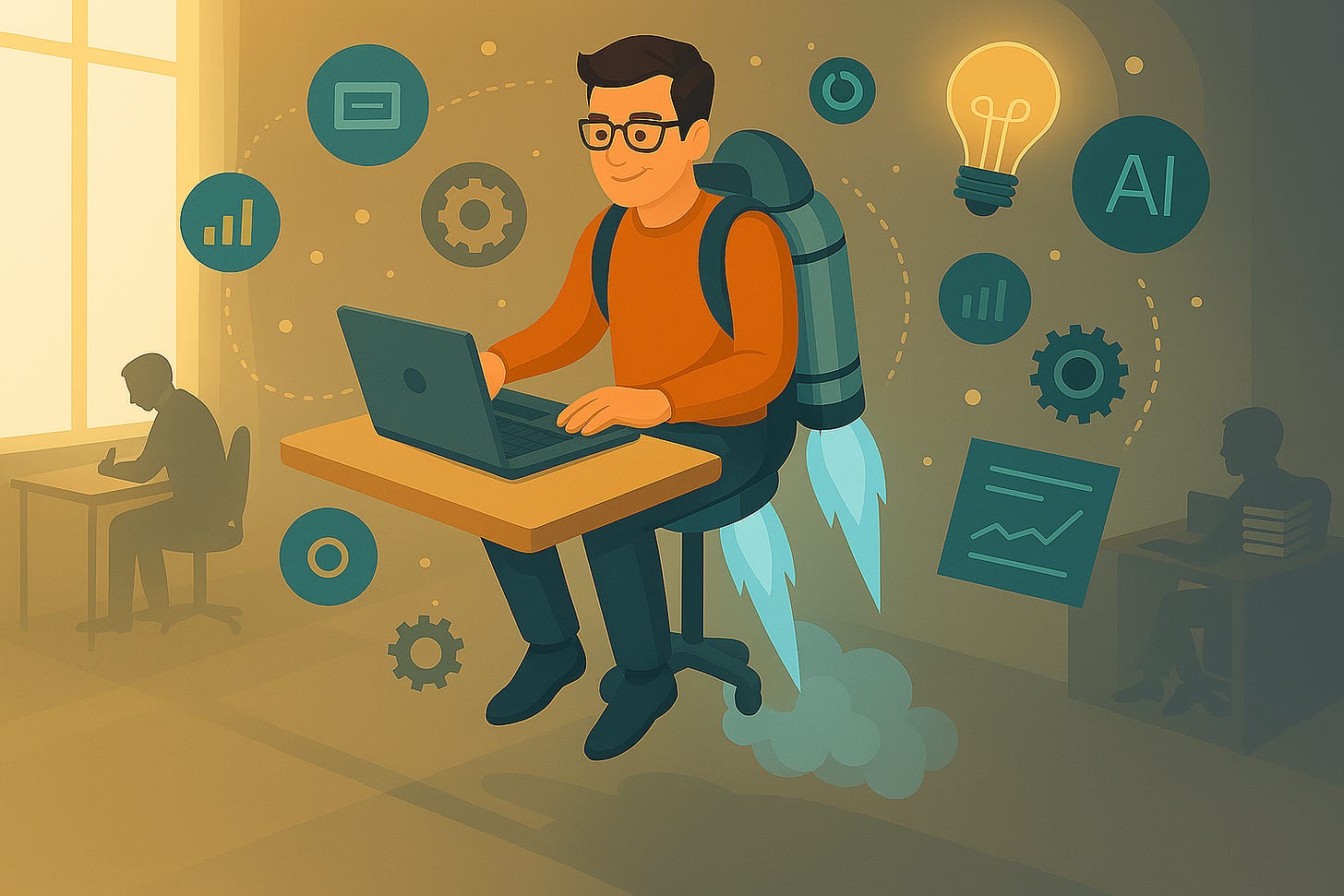There’s a quiet revolution happening right now, and it’s bigger than most people realize. Generative AI isn’t just another app in your tech stack. It can be a collaborator, a problem-solver, and—if you use it right—a multiplier for your creativity and productivity.
It offers something unprecedented: cognitive leverage.
Let’s be clear: this isn’t about AI replacing humans. That’s the kind of dystopian fantasy that headlines love but misses the real story. What’s actually happening is much more exciting—and much more practical. AI is helping people think bigger, refine their ideas, and achieve outcomes that were previously out of reach.
And yet, the buzz around it feels strangely subdued.
If this technology is so transformative, why aren’t more people shouting from the rooftops about it? Why does it feel like we’re missing the fireworks that should come with something so groundbreaking?
What Exactly Is Cognitive Leverage?
Let’s start with the basics.
Cognitive leverage is the ability to extend your mental capabilities with the help of technology. It’s like strapping on a jetpack—not to escape your responsibilities, but to get where you’re going faster and with less effort.
Think about the breakthroughs we’ve already seen:
The calculator didn’t replace mathematicians—it gave them the ability to handle bigger, more complex equations.
The internet didn’t eliminate libraries—it made knowledge universally accessible.
Generative AI isn’t here to replace human intelligence—it’s here to amplify it.
Let’s put this into perspective: imagine you’re brainstorming ideas for a new marketing campaign. Normally, you’d sketch out a handful of concepts, refine them, and bounce them off a colleague or two. That process could take hours, even days.
Now imagine feeding your initial ideas into an AI platform. In seconds, it generates 30 creative variations—some good, some bad, some unexpected. From there, you refine and iterate, narrowing down the field to something truly exceptional. What used to take a week is now a morning’s work.
This isn’t science fiction. It’s happening right now.
So, Why Aren’t People More Excited?
If cognitive leverage is such a game-changer, why aren’t people clamoring to embrace it? Why does this feel like a whispered revolution rather than a loud, celebratory one?
1. It Doesn’t Feel Real Yet: Big changes often start quietly. The internet wasn’t seen as essential in the early 1990s; it was dismissed as a hobby for tech geeks. Smartphones were once “just fancy phones.”
AI is in that same early stage where most people see it as a novelty rather than a necessity. But that’s going to change—quickly. Once someone experiences how AI can save them time or improve their work, they’re hooked.
2. Fear Outshines Optimism: Let’s be honest: fear sells. Headlines about AI stealing jobs, spreading misinformation, or turning evil get far more clicks than stories about its benefits.
Yes, there are risks. And yes, we should approach them responsibly. But for every problem AI introduces, it solves ten more. The real story isn’t about jobs disappearing; it’s about new opportunities to work smarter, faster, and better.
3. The Tools Are Still Rough Around the Edges: Right now, AI tools are powerful but not all are created equal. Sometimes they feel clunky or require more effort than they’re worth.
But that’s a temporary issue. Remember the first iPhones? They were slow, glitchy, and lacked most of the features we now take for granted. AI is on the same trajectory: in just a few years, it will feel as seamless as sending a text message.
The Future of Work Has Already Arrived
The real beauty of cognitive leverage isn’t that it makes things faster or easier (although it does). It’s that it opens up entirely new ways of working and thinking.
Imagine this:
Writers co-creating stories with AI, which suggests plot twists, refines prose, and even checks for historical accuracy.
Entrepreneurs using AI to explore business ideas, run financial projections, and map out go-to-market strategies in record time.
Scientists running simulations and analyzing data in hours instead of months.
This isn’t a far-off future. This is what people are already doing today.
A Quick Reality Check
Let me pause here to give you a real-life example.
This article? It didn’t start as the detailed piece you’re reading now. It began as a rough idea—just 75 words, typed into the Fusion™ RAW CONTENT CREATOR. That tool took the seed of an idea and expanded it into a fully fleshed-out draft.
From there, I used the Fusion™ WRITER’S VOICE to refine the tone, mood, and style, shaping it into something that feels both conversational and professional.
The result is what you’re reading now: a high-quality collaborative creation between human intention and AI-accelerated augmentation. Done in minutes!
This isn’t just an example of how cognitive leverage works—it’s proof.
What Does This Mean for You?
Here’s the bottom line: this isn’t just a trend for tech enthusiasts or people in Silicon Valley. Cognitive leverage is for everyone—writers, designers, entrepreneurs, educators, scientists.
You don’t need to be a coder. You don’t need to understand how the algorithms work. You just need to know what you want to achieve—and let the tools help you get there.
Generative AI is already here, and the people who embrace it now will have a massive head start.
So, What Are You Waiting For?
Generative AI isn’t just cool technology. It’s a partner, an amplifier, and a force multiplier. It doesn’t replace human intelligence—it extends it, allowing us to think bigger, act faster, and achieve more.
The future isn’t something that just happens to us. It’s something we create. And with tools like these, the possibilities are endless.
You can get the tools. You’ve got the ideas. Use them.
Learn more at thefusionsyndicate.com


